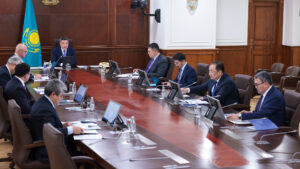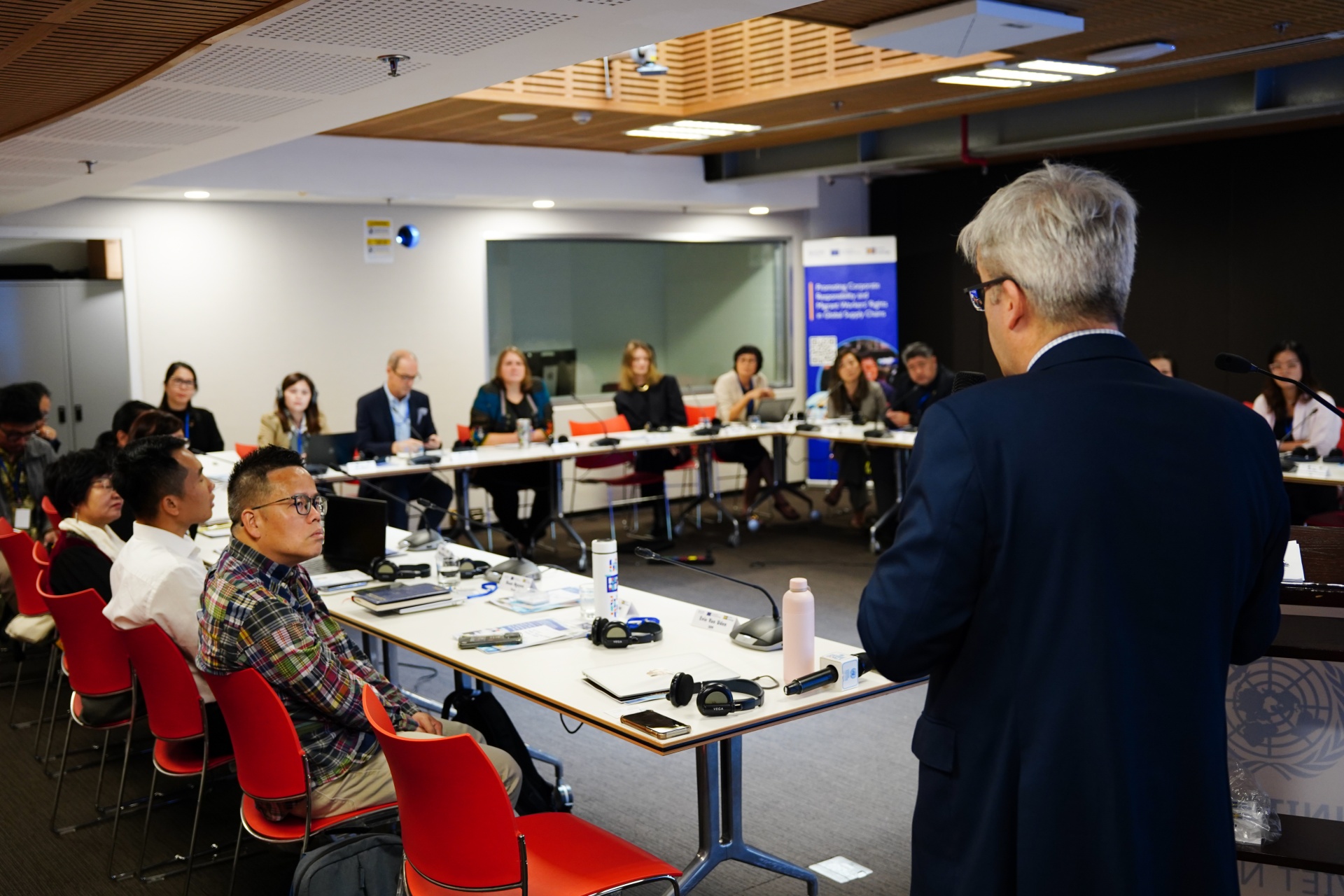Kazakhstan to Launch Unified Fuel and Energy Management System by Year-End – The Astana Times

Kazakhstan Advances Energy Sector Digitalization in Alignment with Sustainable Development Goals
Strategic Directive for Energy Sector Modernization
In a government meeting on October 28, Prime Minister Olzhas Bektenov issued a directive to the Kazakh Energy Ministry to launch the Unified State System for Managing the Fuel and Energy Complex by the end of the current year. This initiative represents a significant step towards modernizing national infrastructure and strengthening institutional capacity, directly contributing to several Sustainable Development Goals (SDGs).
- SDG 9 (Industry, Innovation, and Infrastructure): The development of this digital system builds resilient infrastructure and fosters innovation within a critical economic sector.
- SDG 7 (Affordable and Clean Energy): By improving management and efficiency, the system aims to ensure a more reliable and stable energy supply for all citizens and industries.
System Objectives and Contribution to SDG 7 and SDG 9
The new system, a collaborative effort between the Ministries of Energy and Finance, is designed to achieve key objectives that align with global sustainability targets.
- Real-Time Monitoring: The system will provide continuous, real-time monitoring of all energy facilities. This capability is crucial for enhancing the operational reliability and safety of the national energy grid, a core component of SDG 7’s target for universal access to reliable energy.
- Enhanced Efficiency and Transparency: Digitalization is identified as the primary tool for improving efficiency and transparency. This supports SDG 9 by upgrading infrastructure and industries for sustainability and increased resource-use efficiency.
- Resilience: A digitally managed grid is more resilient to disruptions, ensuring the stable energy supply essential for sustainable industrial growth and national security, as outlined in SDG 9.
Commitments to Energy Capacity and Security
The government has outlined further commitments to bolster the energy sector’s capacity and security, reinforcing its dedication to the SDGs.
- Increased Generation Capacity (SDG 7): A directive was issued to commission 250 megawatts of new generation capacity by the end of this year and an additional 2.5 gigawatts by 2026. This expansion is vital for meeting growing energy demands and supports SDG 7 by increasing the share of modern energy services.
- Cybersecurity and Infrastructure Protection (SDG 9 & SDG 16): By 2026, the government will establish an industry-specific cybersecurity center and a telecommunication infrastructure operator. This initiative protects critical energy infrastructure from cyber threats, contributing to SDG 9 (resilient infrastructure) and SDG 16 (Peace, Justice, and Strong Institutions) by safeguarding national assets.
Governance and Oversight
To ensure effective implementation and coordination of these strategic initiatives, overall supervision has been assigned to First Deputy Prime Minister Roman Sklyar. This establishes a clear governance framework for achieving the nation’s energy and sustainability objectives.
SDGs Addressed or Connected to the Issues Highlighted in the Article
The article discusses the development and digitalization of Kazakhstan’s energy sector. The initiatives mentioned, such as enhancing energy reliability, increasing generation capacity, and building resilient digital infrastructure, directly align with several Sustainable Development Goals (SDGs) focused on energy, infrastructure, and sustainable communities.
- SDG 7: Affordable and Clean Energy: The core of the article revolves around ensuring a stable, reliable, and safe energy supply. The plan to commission new generation capacity and improve the management of the energy complex directly contributes to providing modern energy services.
- SDG 9: Industry, Innovation, and Infrastructure: The article emphasizes digitalization, the creation of a new state management system, and the establishment of a cybersecurity center. These actions represent a significant upgrade to national infrastructure, fostering innovation and building resilience in a critical sector that underpins industrial growth.
- SDG 11: Sustainable Cities and Communities: A reliable energy supply is fundamental for the functioning of cities and communities. The specific mention of “continuous monitoring of the winter heating season” highlights the importance of this infrastructure for the well-being and safety of the population, which is a key aspect of making human settlements resilient and sustainable.
Specific Targets Under Those SDGs Identified in the Article
Based on the actions and goals described in the article, several specific SDG targets can be identified. These targets relate to improving energy access, developing resilient infrastructure, and upgrading technology.
- Target 7.1: By 2030, ensure universal access to affordable, reliable and modern energy services. The government’s focus on enhancing the “reliability and safety” of energy operations and ensuring a “stable energy supply,” particularly through the “winter heating season,” directly supports this target.
- Target 9.1: Develop quality, reliable, sustainable and resilient infrastructure, including regional and transborder infrastructure, to support economic development and human well-being. The launch of the “Unified State System for Managing the Fuel and Energy Complex” and the establishment of a “cybersecurity center” are direct efforts to build more reliable and resilient energy infrastructure.
- Target 9.4: By 2030, upgrade infrastructure and retrofit industries to make them sustainable, with increased resource-use efficiency and greater adoption of clean and environmentally sound technologies and industrial processes. The article’s central theme of “digitalization is a key tool for improving efficiency, transparency, and resilience” is a clear example of upgrading infrastructure through technology to improve performance and management.
Indicators Mentioned or Implied in the Article
The article provides several specific, measurable indicators that can be used to track progress towards the identified targets. These are primarily output-based indicators related to the completion of projects and the expansion of capacity.
- Installed capacity of electricity generation: The article explicitly states the goal of “commissioning of 250 megawatts of new generation capacity by the end of this year and 2.5 gigawatts in 2026.” This provides a clear, quantifiable metric for increasing energy supply.
- Implementation of national infrastructure plans: The instruction to “ensure the launch of the Unified State System for Managing the Fuel and Energy Complex by the end of this year” serves as a binary indicator (achieved/not achieved) for the implementation of a key technological infrastructure project.
- Development of resilient infrastructure: The plan to “establish an industry cybersecurity center and a telecommunication infrastructure operator” by 2026 is a measurable indicator of progress in building infrastructure designed to protect the energy complex from modern threats.
SDGs, Targets, and Indicators Analysis
| SDGs | Targets | Indicators |
|---|---|---|
| SDG 7: Affordable and Clean Energy | 7.1: Ensure universal access to affordable, reliable and modern energy services. | Addition of 250 megawatts of new generation capacity this year and 2.5 gigawatts in 2026. |
| SDG 9: Industry, Innovation, and Infrastructure | 9.1: Develop quality, reliable, sustainable and resilient infrastructure. | Establishment of an industry cybersecurity center and a telecommunication infrastructure operator by 2026. |
| SDG 11: Sustainable Cities and Communities | 9.4: Upgrade infrastructure… with increased resource-use efficiency and greater adoption of… technologies. | Launch of the Unified State System for Managing the Fuel and Energy Complex by the end of the year to improve efficiency, transparency, and resilience. |
Source: astanatimes.com
What is Your Reaction?
 Like
0
Like
0
 Dislike
0
Dislike
0
 Love
0
Love
0
 Funny
0
Funny
0
 Angry
0
Angry
0
 Sad
0
Sad
0
 Wow
0
Wow
0
















































:focal(1500,1000)/https://media.globalcitizen.org/a6/9a/a69a4720-d8a1-4715-b596-18738d03c05c/rotary_polio_hero_image.jpg?#)







/countries/sri-lanka/photo-credit---dmc-sri-lanka.tmb-1200v.jpg?sfvrsn=dc298bcc_1#)


















